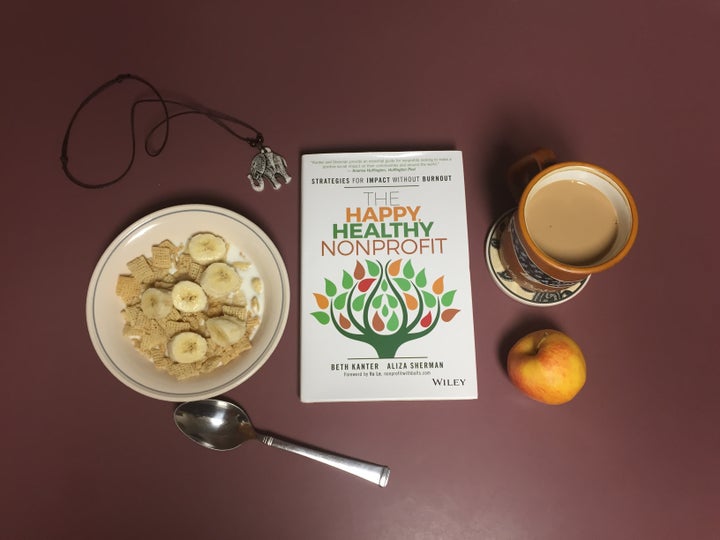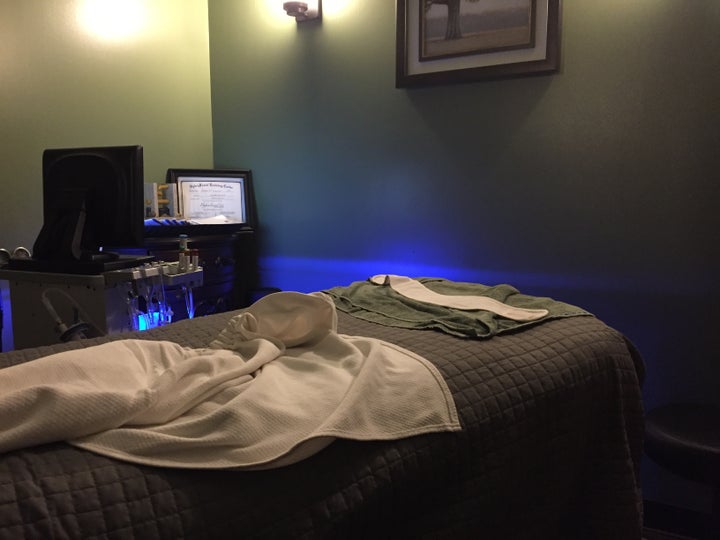
Working for a nonprofit that has limited resources can be a pressure cooker. But what if your organization’s culture encouraged you, and everyone who worked there, to embrace self-care without guilt? What if you could feel the vibrancy of your organization when you stepped into the physical office or hear it in the voices of staff when they talked about what it is like to work at your organization?
What if every time your organization advertised a position, you were flooded with exceptional applicants because of your nonprofit’s reputation for a culture of wellbeing with policies and benefits to support it?
Imagine the increase in results your organization would experience because of high talent retention rates instead of high turnover, eliminating cracks in your institutional memory. What if this was YOUR organization?
I’m Aliza Sherman, co-author of the book, The Happy, Healthy Nonprofit: Strategies for Impact Without Burnout, co-authored with master trainer and nonprofit tech authority Beth Kanter. In our book, we’ve explored the causes of burnout in the nonprofit sector and offer alternatives to dysfunction, energy depletion, low morale, high turnover, and other conditions that stand in the way of achieving better outcomes. We’ll continue to do so here.
We advocate treating self-care and wellbeing as an organizational strategy to help create a Happy, Healthy Nonprofit. Your efforts toward self-care must be supported by your organization – something we call “WE-care.”
WE-care does the following:
- Recognizes self-care as an inextricable part of work.
- Acknowledges an organizational responsibility for self-care.
- Builds healthy work/life boundaries into workdays and workweeks.
- Ties passion for personal wellbeing to passion for organizational mission.
- Goes beyond a focus on physical health.
- Helps the nonprofit become a high performance organization and sustain results.
We interviewed scores of nonprofit leaders, staff and board members for our book and will share excerpts plus content that didn’t fit but is still incredibly useful. What we discovered through our research is nonprofits that practice Happy, Healthy ways of working are also high performance organizations.
One of the nonprofit leaders we interviewed was Nancy Lublin, CEO of Crisis Text Line, who literally told us in our interview with her that “burnout is bullshit.” We were taken aback. Certainly staff at a nonprofit such as Crisis Text Line, which provides counseling and intervention to people in crisis, might experience high levels of stress and burnout. But Lublin, who also founded Dress for Success and Do Something, believes that “burnout” equals being “out of love” with one’s job, and if that’s the case, she says, either that person should get another job or be asked to leave.
Lublin’s zero tolerance for bad attitudes and for people who don’t take care of themselves means she is willing to let someone go if they aren’t happy at their job. Lublin goes as far as offering to pay staff who are not happy with their jobs to look for new ones and leave the organization on good terms. By paying attention to the culture of her organization and empowering staff to be proactive about “cleaning house,” she helps to eliminate some of the internal stressors of rigorous, high-pressure work. Not surprisingly, Crisis Text Line is a high performance organization.
Both Beth and I personally experienced the ravages of stress and burnout on our health. Both of us love our jobs, however, stress can creep into your life and work due to a multitude of factors. Ironically, both Beth and I were dealing with overwhelming grief after the death of our own fathers in the last several years.
For me, stress and grief manifested as depression, my hair was falling out, my patience was shot, and I kept feeling as if I were having a heart attack. Several stress and cardio tests later, I was told there was nothing physically wrong with me. Although my issues may have been in my head, the brain is incredibly powerful, manifesting my emotional state in physical symptoms.
What I soon found is that by applying some of the tactics Beth and I researched for our book, I was able to make vast changes in my life to get through challenging times.
In a word, I engaged in SELF-CARE. I took self-care seriously for a change, not just paying it lip service like many of us tend to do. I’ve been on a deliberate mission to give myself the care and attention I deserve so I’m able to sustainably serve others through my work and at home and not sacrifice and suffer for it. The only difference between me and a typical nonprofit professional is that I’m a solo practitioner, so as my own boss, I can allow myself time to take a walk or take a break as needed. Unfortunately, not all bosses are on board with self-care.
In order to be sustainable, “Happy” and “Healthy” must align with your organization’s values and be part of your organization’s culture and work processes, hand-in-hand with the hard skills. Beth Kanter and I hope we can spark an exciting and much-needed movement in the nonprofit sector: Championing Happy and Healthy as essential parts of our work and workplace and every day lives to give us the sustainable energy, focus and fortitude we need to help make our world a better place.

